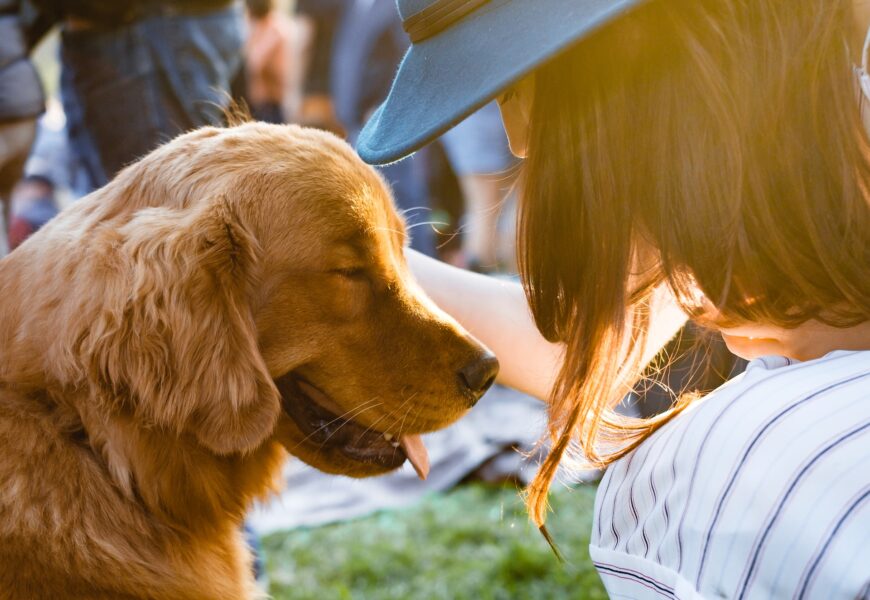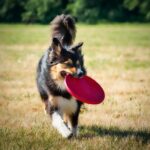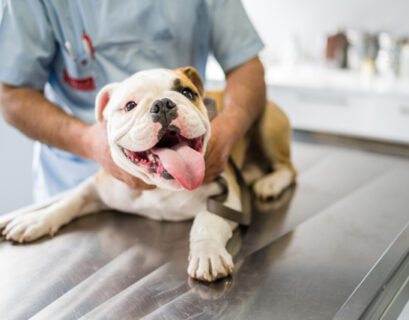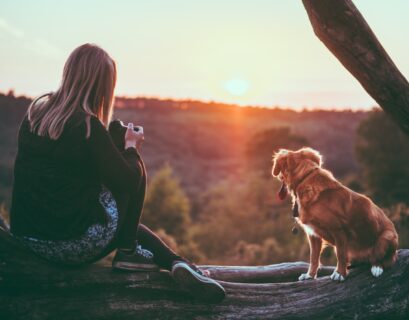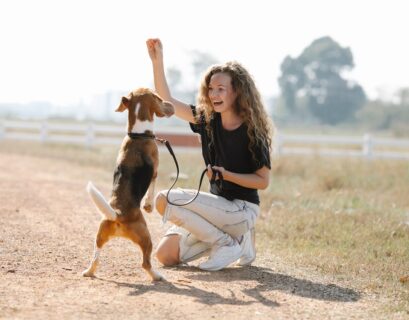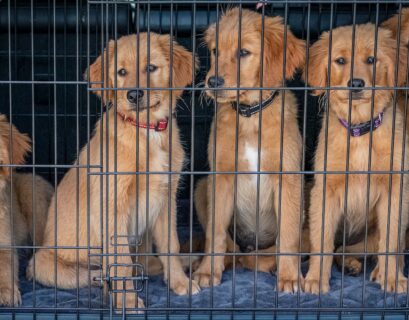“Unlocking the Secret to a Happy Tail-Wagging Life: The Art of Dog Socialization!”
As the morning sun peeks over the horizon, you open the front door, and there they are; welcoming a furry friend into your life is a heartwarming experience. Dogs, with their loyal companionship and unwavering affection, quickly become cherished members of our families. As pet owners, we are responsible for ensuring our dogs lead happy and fulfilling lives. One crucial aspect of their well-being is socialization – introducing them to other dogs and people in a positive and controlled manner.
Just like us, dogs thrive on social interactions. Engaging them in these encounters allows them to learn valuable communication skills and develop a strong sense of confidence. However, the socialization journey can be challenging, and it requires patience, understanding, and a deep appreciation for the uniqueness of each canine personality.
The significance of dog socialization and the remarkable benefits it offers are huge. Delving into the science behind canine behavior, the role of early socialization in shaping their personalities, and essential tips for fostering a positive experience for both your dog and those they interact with. Whether you have a playful puppy, a shy adult dog, or a newly adopted furry companion, this guide aims to equip you with the knowledge and strategies to make the socialization journey joyful and rewarding.
Understanding Canine Behavior: Natural Pack Instincts and Social Structure
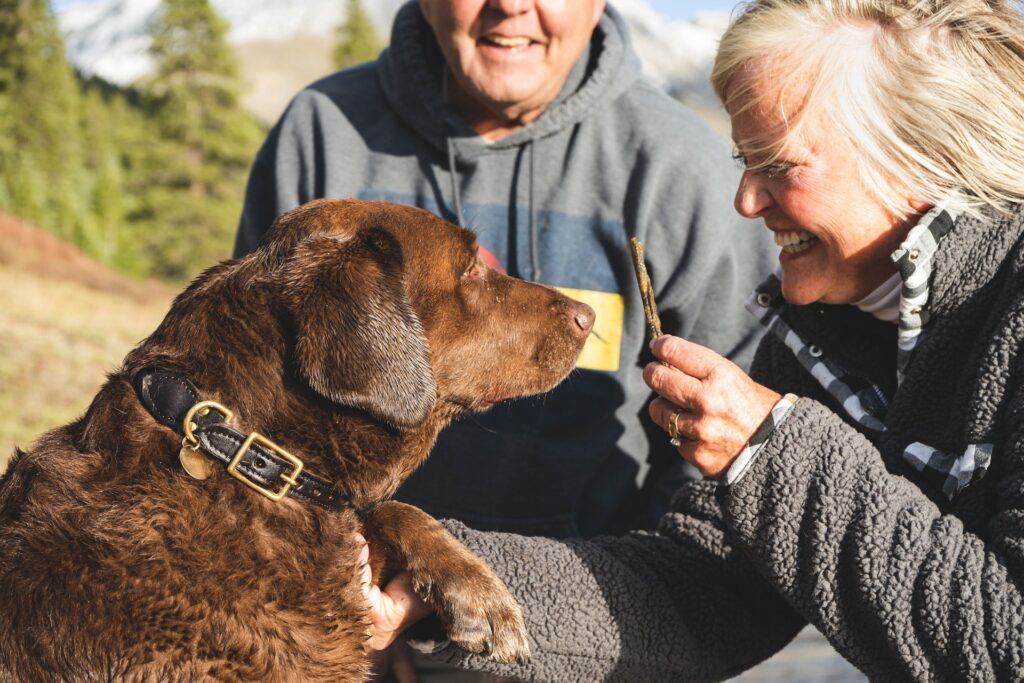
Dogs are inherently social animals, and their evolutionary history as pack animals deeply influences their behavior. In the wild, dogs group into packs with a distinct social structure run by an alpha or dominant individual. Understanding these natural pack instincts and social structures is essential for comprehending their behavior in domestic settings.
A. Natural Pack Instincts
In the wild, a pack provides its member’s safety, companionship, and shared resources. Each dog in the pack has a distinct role and position, and they communicate through body language, vocalizations, and scent marking. This pack mentality is still present in domesticated dogs, as they perceive their human families as their packs, with humans as the alpha figures.
As responsible dog owners, recognizing this instinctual behavior allows us to establish ourselves as confident and consistent leaders, promoting a harmonious relationship with our pets.
B. Developmental Phases for Socialization
Puppies undergo crucial developmental phases that significantly impact their ability to socialize with other dogs and people. The early weeks of a puppy’s life are particularly critical for shaping their social skills and overall behavior.
A. Critical Socialization Periods in Puppyhood
The primary socialization window for puppies occurs between 3 to 14 weeks of age. During this period, they are highly receptive to new experiences and are more likely to accept novel situations, people, and animals without fear or aggression. Exposing puppies to various positive interactions during this time lays the foundation for a well-adjusted and confident adult dog.
B. Positive Experiences for Lifelong Social Skills
Introducing puppies to different environments, surfaces, sounds, and a diverse range of people and animals is vital. Positive experiences during these formative weeks help puppies build resilience and adaptability, leading to more confident and sociable behaviors as they grow older. However, ensuring that these experiences are carefully controlled and free of negative stimuli that may cause fear or trauma is crucial.
As owners, we play a pivotal role in shaping our puppies’ behavior by creating a safe and supportive environment for their socialization journey. By fostering positive interactions and exposure to various stimuli during these critical periods, we set our furry friends up for a lifetime of successful socialization.
Understanding and respecting a dog’s natural pack instincts and providing ample opportunities for positive socialization experiences are fundamental pillars in nurturing a well-rounded and emotionally balanced canine companion. Doing so ensures that our furry friends flourish in their interactions with their kind and the human world, forming strong bonds and enriching our lives with their boundless love and loyalty.
Socializing with Other Dogs: Safe and Controlled Playdates
Interactions with other dogs are vital for a dog’s development and well-being. However, it is crucial to approach dog-to-dog socialization with care and consideration to ensure positive outcomes.
A. Safe and Controlled Playdates
When introducing your dog to other dogs, choose calm and well-socialized canine companions to create a positive experience. Initially, opt for one-on-one playdates in a familiar and secure environment, allowing the dogs to gradually get to know each other. Watch their body language closely for signs of comfort or discomfort, and intervene if necessary to prevent potential conflicts.
Professional dog trainers or canine behaviorists can provide guidance and facilitate safe playdates, especially if your dog shows signs of anxiety or fear around other dogs. These controlled interactions help build your dog’s confidence and teach appropriate social cues.
B. Dog Parks: Dos and Don’ts
Dog parks can be wonderful to socialize and burn off excess energy. However, they can also be overwhelming and potentially unsafe if not managed correctly.
Before heading to a dog park, ensure your dog has a solid recall and responds well to basic commands. Observe the park from a distance to assess the temperament of the dogs present, and enter only when you feel confident about the environment.
While at the park, keep a watchful eye on your dog’s interactions and body language. Avoid allowing your dog to engage in rough play or chase behaviors that may escalate into conflicts. If your dog becomes overwhelmed or uncomfortable, it’s okay to leave the park and try again another day.
Socializing with People: Encouraging Positive Human Interactions
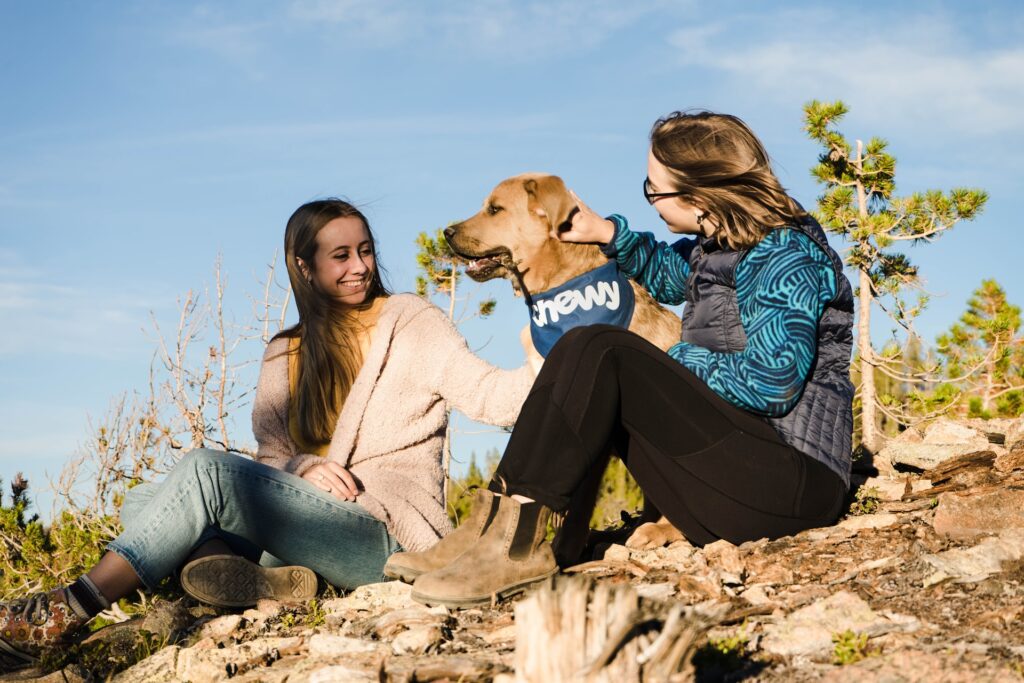
A well-socialized dog is comfortable and friendly around people, both familiar and strangers. Building positive human interactions is essential to achieving this level of socialization.
A. Encouraging Positive Human Interactions
Expose your dog to various people, including different ages, genders, and ethnicities, during their critical socialization period. Offer treats and praise when they approach new people calmly and in a friendly manner. Consistently reinforce positive interactions with strangers to instill confidence and trust in your dog.
Practice obedience training in various settings, including busy public areas, to help your dog become more adaptable and well-behaved around people. Use positive reinforcement techniques to encourage desired behaviors, such as sitting politely when greeting someone new.
B. Addressing Fear and Aggression Towards Strangers
If your dog exhibits fear or aggression towards strangers, addressing these behaviors promptly and appropriately is crucial. Seek the assistance of a professional dog trainer or behaviorist to identify the underlying causes and create a behavior modification plan.
Forcing your dog into uncomfortable situations may worsen their fear or aggression. Instead, work gradually to desensitize them to triggers while ensuring their safety and the safety of others. Patience, consistency, and positive reinforcement are keys to helping your dog overcome their anxieties and develop positive interactions with people.
Creating a strong foundation of socialization with other dogs and people enriches your dog’s life and enhances its ability to navigate various situations confidently. The journey of socialization is challenging. Still, with the right approach and understanding, you can help your furry companion thrive in their interactions, fostering a happy and well-adjusted canine companion for years.
Socializing in Various Environments: Introducing New Places and Situations
A well-socialized dog is adaptable and comfortable in different environments. As responsible pet owners, we can help our furry friends easily navigate new places and situations.
A. Introducing New Places and Situations
Gradual exposure to different environments is key to successful socialization. Start by introducing your dog to new places with minimal distractions and gradually increase the level of stimulation. This could include a variety of outdoor settings, such as parks, beaches, cafes with outdoor seating, and pet-friendly stores.
Allow your dog to explore at their own pace, encouraging them with treats and praise when they remain calm and curious. If your dog shows signs of unease or stress, provide reassurance and consider returning to a less overwhelming environment.
B. Coping with Noisy or Crowded Settings
Some dogs may find noisy or crowded environments challenging to cope with. To prepare your dog for such situations, begin by exposing them to mild noises, such as vacuum cleaners or doorbells, and gradually progress to louder sounds, like fireworks or traffic noise.
Practice desensitization exercises, such as playing recordings of various sounds, while rewarding your dog for remaining calm. Gradually expose them to crowded areas, ensuring they feel safe and secure on a leash. Utilize positive reinforcement to encourage positive behavior in the face of noise or crowds.
Socialization Challenges and Solutions: Dealing with Reactive or Fearful Behavior
Every dog is unique, and some may face challenges during socialization. Reactive or fearful behavior can manifest due to past experiences or lack of exposure.
A. Dealing with Reactive Behavior
If your dog exhibits reactive behavior, such as excessive barking or lunging towards other dogs or people, consult a professional dog trainer or behaviorist for guidance. Reactive behavior may be rooted in fear, anxiety, or a desire to protect their space.
A qualified trainer can help you implement counter-conditioning techniques, gradually changing your dog’s emotional response to triggers and teaching alternative behaviors. Patience and consistency are crucial in addressing reactive behavior, and improvements can be achieved with time and proper guidance.
B. Seeking Professional Training Assistance
If your dog’s socialization challenges feel overwhelming or you need help with how to proceed, feel free to seek professional training assistance. Trained experts can assess your dog’s behavior and create a tailored socialization plan that addresses their needs.
Remember that socialization is not a one-size-fits-all approach, and some dogs may require more time and patience than others. The key is to stay committed to the process and provide your dog with a supportive and understanding environment.
Socializing Adult Dogs: Challenges and Benefits
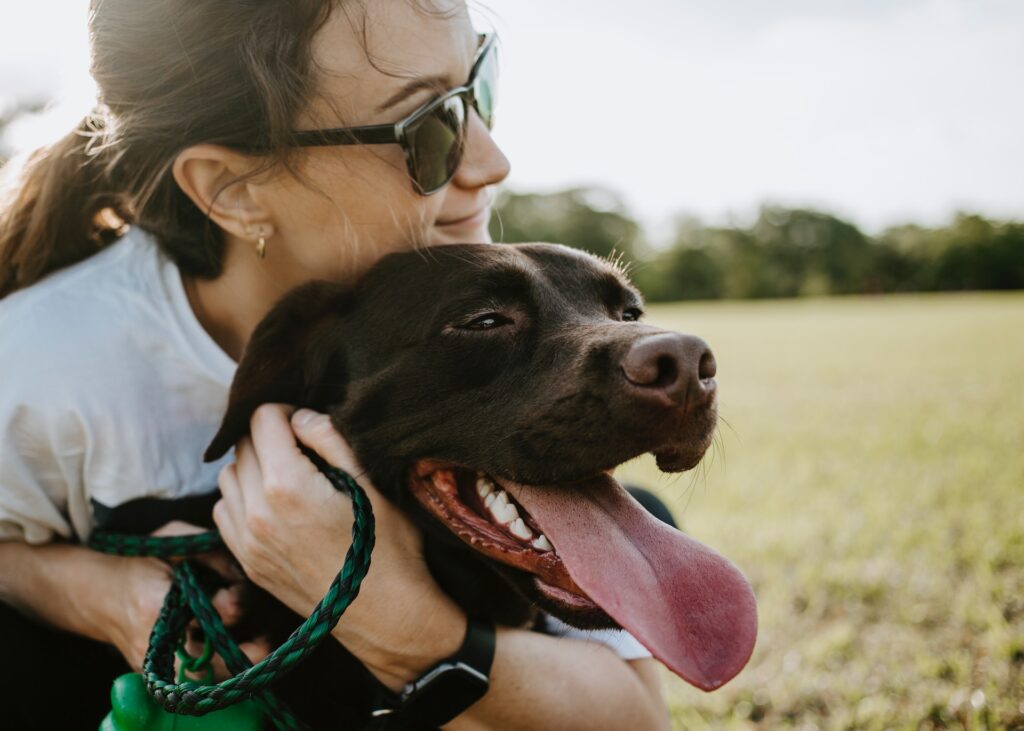
While early socialization is ideal, there is always time to work on socializing adult dogs. Adult dogs may come with their challenges and experiences, but the benefits of socialization remain significant.
A. Challenges and Benefits of Socializing Adult Dogs
Adult dogs not adequately socialized in their earlier years may display behavioral issues or anxiety in new situations. However, with the right approach and patience, adult dogs can still learn to adapt and enjoy social interactions.
Socializing adult dogs may require a more gradual approach, respecting their comfort zones while slowly introducing them to new experiences. The benefits of successful socialization for adult dogs include increased confidence, improved behavior, and strengthened bonds with their owners.
B. Gradual Exposure and Patience
When socializing adult dogs, gradual exposure is key. Begin with low-stress situations and gradually increase the stimulation level as your dog becomes more comfortable. Use positive reinforcement and reward your dog for remaining calm and relaxed during new experiences.
Be patient with your adult dog, understanding that change takes time. Building trust and providing reassurance will help your dog build positive associations with socialization and new environments.
Socialization and Dog Breeds: Breed-Specific Traits and Socialization Needs
Different dog breeds have varying temperaments and socialization needs. Understanding breed-specific traits can help tailor socialization approaches to meet individual needs.
A. Breed-Specific Traits and Socialization Needs
Herding breeds, for example, may have a strong instinct to chase, while guardian breeds may exhibit protective behaviors. Socializing these breeds should include controlled introductions to other animals and strangers, focusing on reinforcing positive behaviors.
On the other hand, companion breeds may be more predisposed to separation anxiety and may benefit from exposure to various people and environments from an early age.
B. Adapting Approaches for Different Breeds
Knowing your dog’s breed-specific traits allows you to adapt your socialization approach to cater to their needs. Consult breed-specific resources or work with a professional trainer with experience with your dog’s breed to ensure a well-rounded socialization experience.
Socialization and Adopted Dogs: Understanding Past Trauma and Behavioral Issues
Adopting a dog with unknown past experiences can present unique challenges in socialization. Understanding their history and past trauma is crucial for creating a successful socialization plan.
A. Understanding Past Trauma and Behavioral Issues
Dogs that have experienced neglect, abuse, or limited socialization in their previous homes may exhibit fear, anxiety, or reactive behavior. It is essential to approach socialization for adopted dogs with extra sensitivity and patience.
Observe your adopted dog’s body language and provide them with a calm and secure environment. Allow them to approach new situations at their own pace, avoiding overwhelming them with unfamiliar stimuli.
B. Slow and Gentle Socialization Strategies
For adopted dogs, slow and gentle socialization strategies are key. Gradual exposure to new people, animals, and environments helps them build trust and confidence. Engaging in positive reinforcement training and providing consistent reassurance will aid in the process of helping your adopted dog develop positive social interactions.
The Don’ts of Dog Socialization: Avoiding Overwhelm and Negative Experiences
Socialization is a delicate process that requires thoughtful planning and consideration. Avoiding negative experiences and overwhelming your dog is crucial to their successful socialization.
A. Avoiding Overwhelm and Negative Experiences
Overwhelming your dog with intense stimuli or forcing interactions can lead to fear, anxiety, and reactive behaviors. Pay attention to your dog’s body language and provide them with a safe space to retreat if they become stressed or anxious.
Avoid putting your dog in situations where they may feel threatened or exposed to negative encounters. Instead, focus on creating positive and controlled socialization experiences that build their confidence and trust.
B. Not Forcing Unwanted Interactions
Respect your dog’s comfort zone and never force them into uncomfortable interactions. Forcing unwanted interactions can lead to negative associations and hinder their socialization progress.
Allow your dog to approach new situations at their own pace, and provide them with the choice to interact or distance themselves as they feel comfortable. Respect their boundaries and support their emotional well-being throughout the socialization process.
Conclusion
Socialization is a journey that shapes a dog’s personality, behavior, and emotional well-being. Understanding their natural pack instincts, recognizing the importance of early socialization, and providing positive experiences in various environments, we set the stage for a happy and well-adjusted canine companion.
Addressing socialization challenges with patience and seeking professional guidance when needed ensures that every dog has the opportunity to develop into a confident and friendly member of their human family. Remember that socialization is not a one-time event but an ongoing process that enriches your dog’s life and your bond.
We celebrate the joy of watching our beloved furry friends grow and flourish in their interactions with other dogs and people. Embrace the experiences, learn from each encounter, and create a world of positive socialization for your canine companion. Together, we can foster a community of happy, well-adjusted, and socially adept dogs, spreading their boundless love and joy to all who cross paths. Embrace the experiences, learn from each encounter, and create a world of positive socialization for your canine companion. Together, we can foster a community of happy, well-adjusted, and socially adept dogs, spreading their boundless love and joy to all who cross paths.
The transformation of a shy or fearful pup into a confident and friendly adult dog is heartwarming. The effort put into socialization pays off in spades as you witness your furry friend confidently explore new places, wag their tail in delight, and warmly greet both familiar faces and strangers with a friendly demeanor.
Remember that each dog is unique, and the socialization journey may have its ups and downs. It’s essential to celebrate small victories and be patient during challenging moments. Always prioritize your dog’s emotional well-being and never rush or force them into situations that cause distress.
Moreover, socialization isn’t just about helping your dog interact with other dogs and people; it’s also about forming a deeper connection with your furry companion. Building trust and understanding between you and your dog through positive experiences fosters a long-lasting, long-lasting bond.

